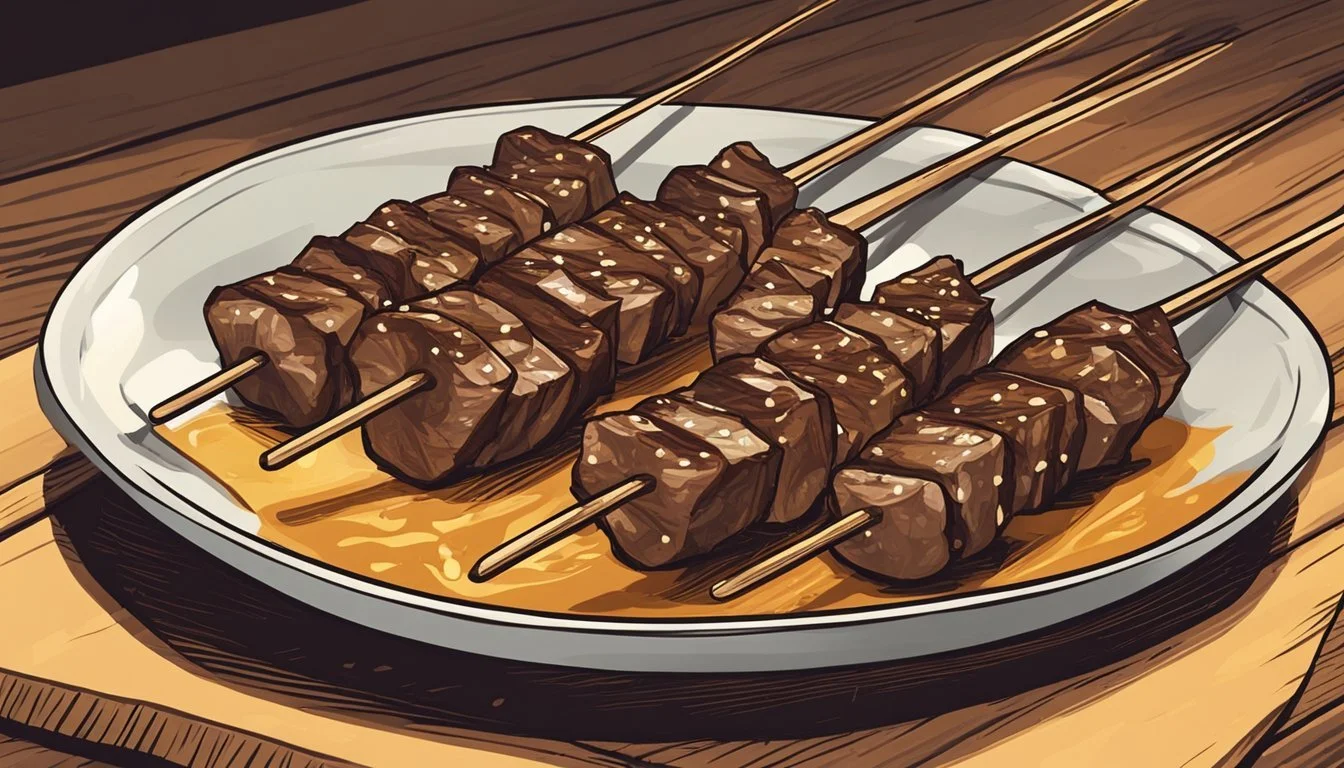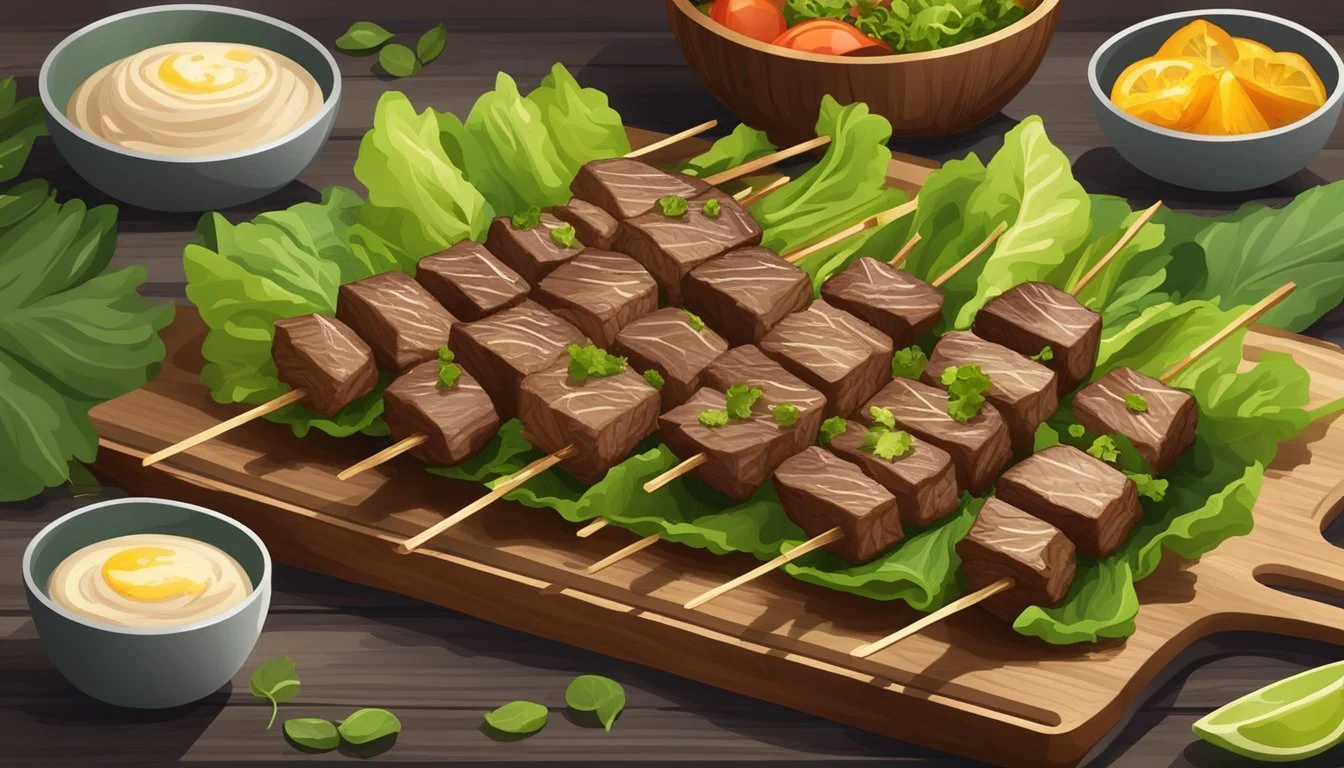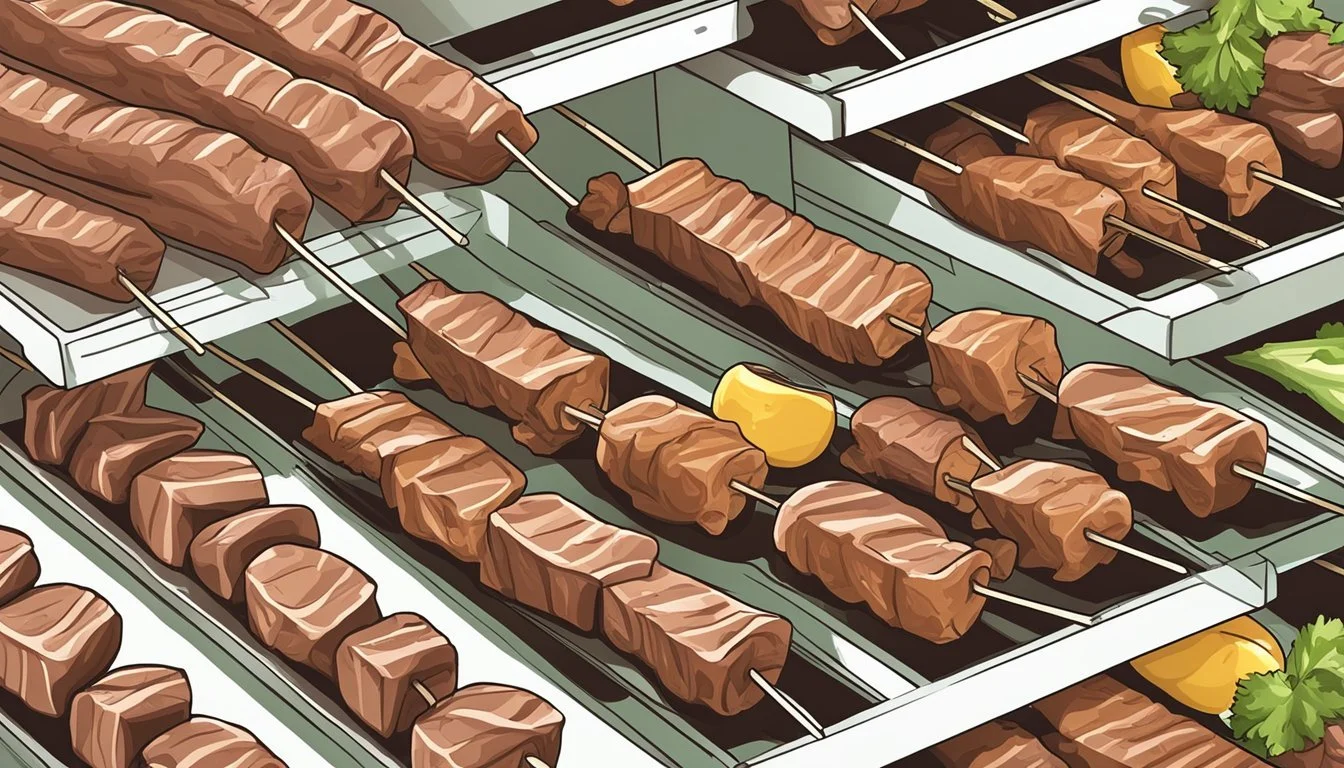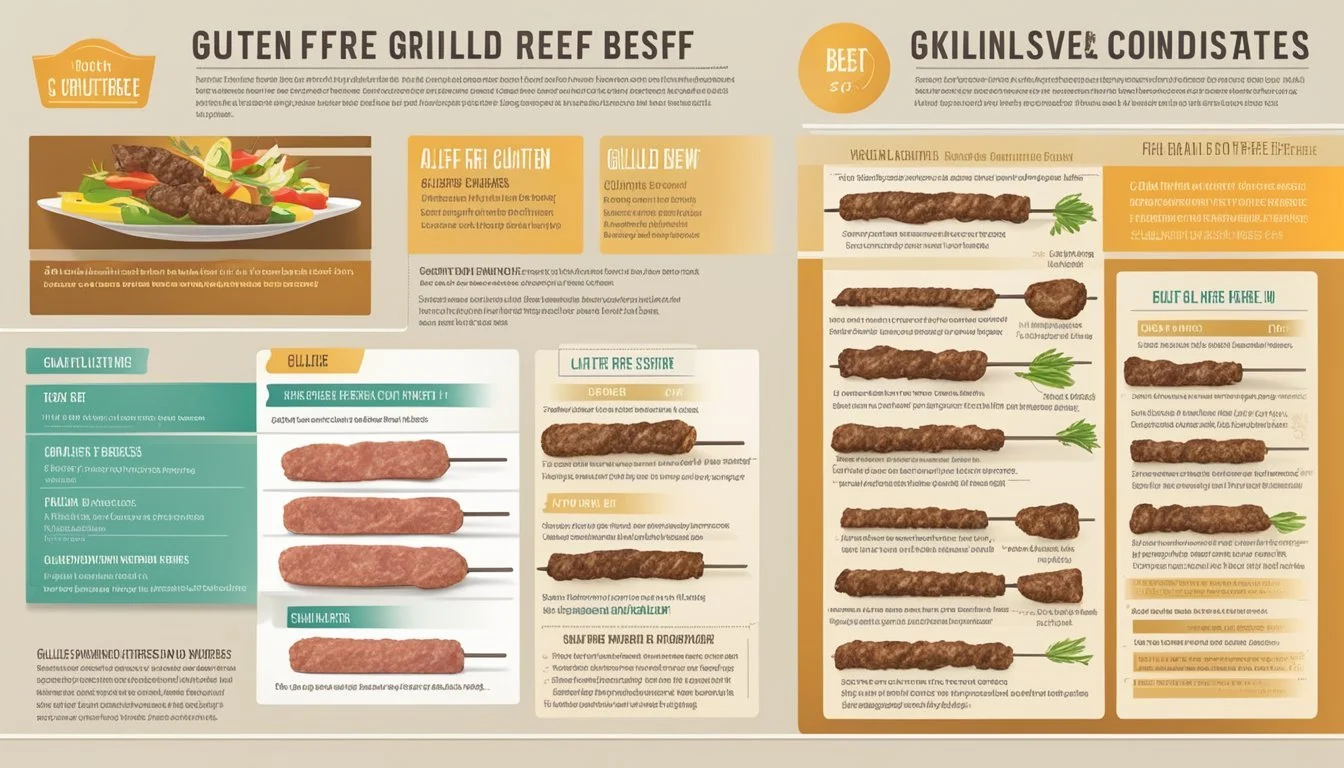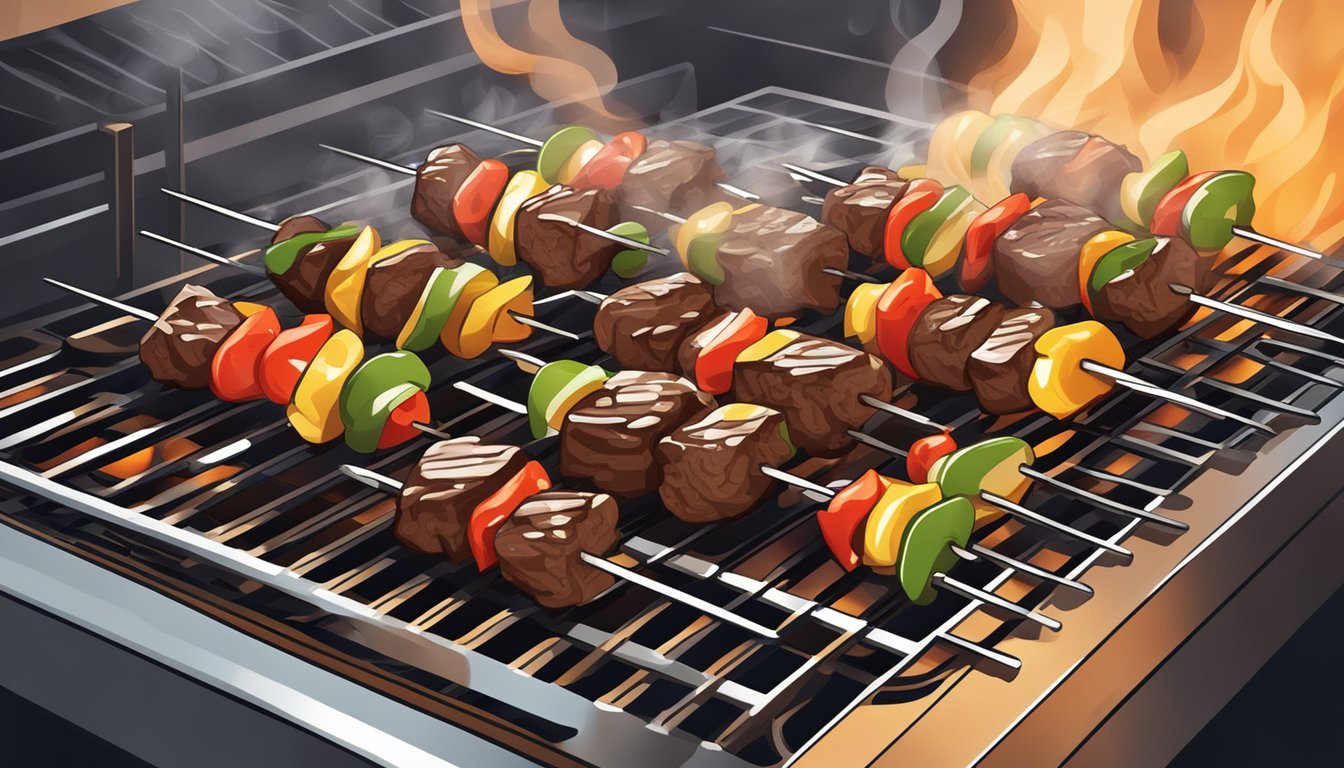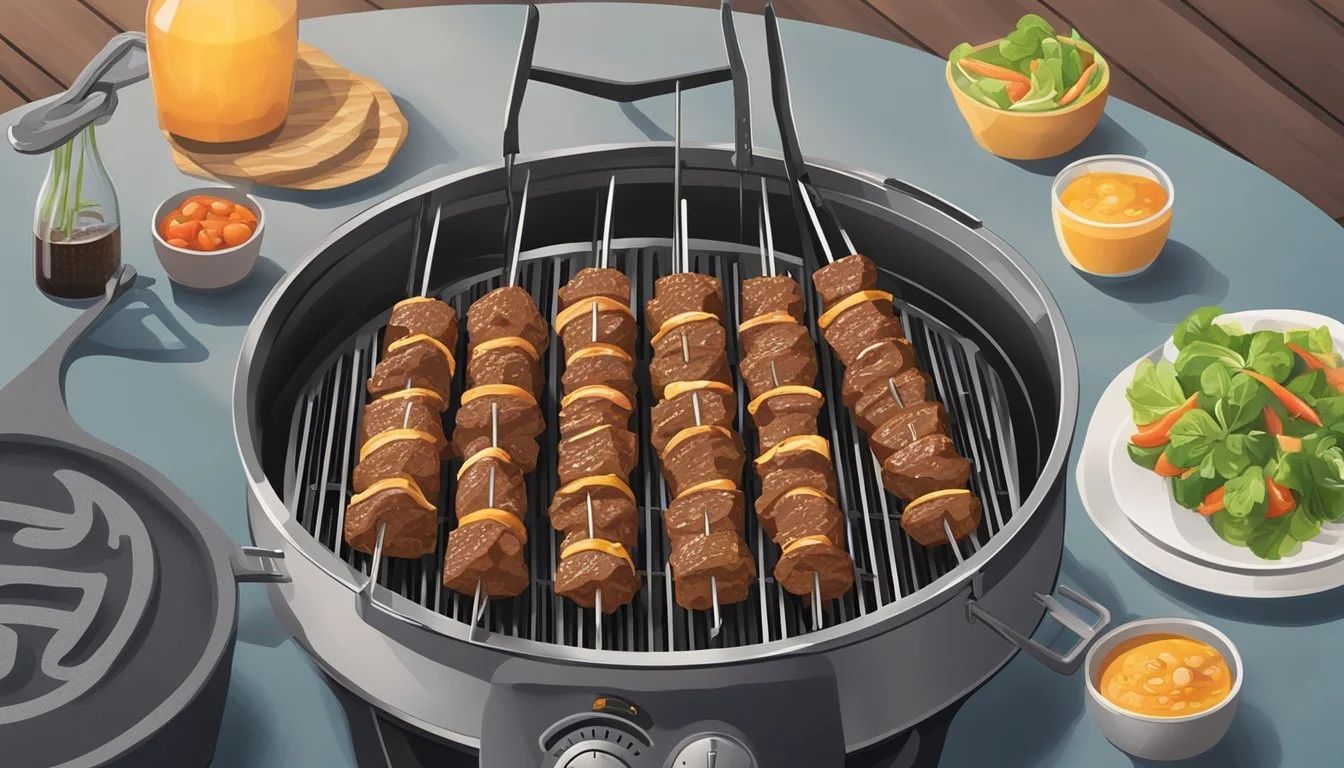How Long Do Gluten-Free Grilled Beef Skewers Last?
Storage Tips and Safety Guidelines
Few things evoke the essence of summer quite like the sizzle of beef skewers on the grill. Preparing gluten-free grilled beef skewers not only ensures a delightful dining experience but also caters to those with dietary restrictions. Once grilled to perfection, it’s essential to know how long these skewers can last to enjoy them safely.
When stored properly in a sealed container, grilled beef skewers can last in the refrigerator for up to 3-4 days. To maximize their shelf life, ensure they are refrigerated within two hours of grilling. This practice minimizes the risk of bacterial growth and keeps the skewers flavorful and safe to eat.
For longer storage, consider freezing the skewers. Frozen, they can maintain their quality for 2-3 months. When ready to eat, thaw them in the refrigerator overnight and reheat thoroughly to retain their delicious taste and texture.
Understanding Gluten-Free Grilling
When grilling gluten-free, special care is required to maintain the integrity of ingredients and avoid cross-contact with gluten-containing foods. Choosing quality beef cuts and a well-crafted marinade ensures a flavorful and safe grilling experience.
Gluten-Free Grilling Basics
Gluten-free grilling starts with preventing cross-contact. Designate specific tools, racks, and surfaces for gluten-free cooking. This prevents accidental contamination with gluten. For instance, using tin foil or dedicated grilling mats can create a barrier that keeps gluten-free items safe.
Monogramming tongs and spatulas can help in keeping them separate. Grills must be cleaned thoroughly before use, as residue from previous meals can compromise gluten-free food. Regular maintenance and vigilance are crucial for a flawless grilling experience.
Selecting Suitable Beef Cuts for Skewers
Choosing the right beef cuts enhances the grilling process. Cuts like sirloin, tenderloin, and ribeye are ideal due to their tenderness and flavor profile. They hold up well on the grill and absorb marinades effectively, which augments the overall flavor.
When slicing beef for skewers, uniformity is key. Cut beef into evenly sized pieces to ensure even cooking. Thicker chunks take longer to cook and may end up overcooked on the outside while remaining undercooked inside.
Importance of Quality Ingredients
High-quality ingredients are the backbone of any great recipe. Opt for fresh, organic vegetables and gluten-free seasonings for the best outcome. Gluten-free marinades and sauces should be clearly labeled as such. Common marinades containing gluten-free soy sauce or tamari work well.
Balanced seasoning using herbs and spices can lift flavors without relying on gluten. Checking labels for hidden gluten in sauces and condiments is essential. Reliable brands like Gluten-Free Pantry and Canyon Bakehouse offer gluten-free options that are safe and delicious.
By implementing these practices, one ensures a safe, savory, and satisfying gluten-free grilling experience for everyone.
Preparation of Beef Skewers
Proper preparation is key to flavorful and tender grilled beef skewers. Attention to marinating, assembling, and pre-grilling steps ensures a delicious outcome.
Marinating Your Beef
Marinating beef enhances flavor and tenderness. Choose a marinade with ingredients like olive oil, garlic, lemongrass, salt, black pepper, and cilantro. Combine these in a bowl, ensuring the sugar and salt dissolve.
Slice the beef into ¼-inch strips for better absorption of the marinade. Place the beef in a sealed bag or covered dish and refrigerate. Marinate for at least 30 minutes, but ideally 4-6 hours for deeper flavor. The acid and enzymes in the marinade help break down the meat fibers, resulting in a more tender texture.
Assembling Skewers
After marinating, it's time to assemble the skewers. You can use either bamboo or metal skewers. If using bamboo skewers, soak them in water for at least 30 minutes to prevent burning.
Thread the beef strips onto the skewers, leaving a small space between pieces for even cooking. This spacing ensures each piece is exposed to heat, providing a consistent cook. Alternate the beef with vegetables like bell peppers, onions, or cherry tomatoes if desired. This not only adds flavor but makes for a colorful presentation.
Pre-grilling Preparations
Before grilling, preheat your grill to high heat, around 450°F – 500°F. Ensure the grill grates are clean; a quick brush will do. Oil the grates lightly to avoid sticking, using a paper towel dipped in olive oil.
Remove the skewers from the marinade and let excess marinade drip off. Place the skewers on a plate and allow them to reach room temperature. This step helps in achieving an even cook. Have your basting brush and extra marinade ready for additional flavor during grilling. These pre-grilling steps are crucial for well-cooked, delectable beef skewers.
Grilling Techniques for Beef Skewers
Grilling beef skewers to perfection requires mastering the heat levels, knowing the optimal grilling time and turning technique, and handling them properly after grilling. Each step is crucial for ensuring juicy, flavorful, and safe-to-eat skewer dishes.
Mastering Heat Levels
For best results, beef skewers should be grilled over medium-high heat. This typically means maintaining a temperature between 375°F and 400°F. Start by preheating the grill to the desired temperature.
Using direct heat, place the skewers on the grill. This provides a good sear, creating a delicious char that enhances flavor. Keep the grill lid open initially to sear the meat, and then close it to continue cooking.
Avoid using high heat that may burn the exterior while leaving the interior undercooked. Consistent medium-high temperature ensures even cooking and maintains the meat's juiciness.
Grilling Time and Turning
The cooking time for beef skewers is influenced by the size of the beef cubes and the grill's temperature. For medium-rare skewers, it generally takes about 3-4 minutes per side.
It's important to turn the skewers only once to maintain moisture and achieve a uniform char. Use tongs to turn the skewers gently, preventing loss of juices.
Keep an eye on the grill. Move the skewers around if hot spots occur to avoid burning. Use a meat thermometer if needed; aim for an internal temperature of 135°F for medium-rare and 145°F for medium.
Post-Grilling Handling
Once grilled, remove the skewers and let them rest for a few minutes. This allows the juices to redistribute within the meat, enhancing flavor and tenderness.
Place the skewers on a clean plate, reminding them not to be stacked. Stacking can cause steaming, diminishing the charred crust you’ve achieved.
If not serving immediately, cover loosely with foil to keep warm while preventing them from becoming soggy. Proper handling post-grilling ensures the beef skewers are as delicious when served as they were right off the grill.
Serving and Presentation
Proper serving and presentation transform gluten-free grilled beef skewers from a simple dish to a memorable dining experience. Accompaniments and plating techniques play a significant role in enhancing the flavors and appearance.
Accompaniments and Side Dishes
Selecting the right accompaniments enhances the flavors of gluten-free grilled beef skewers. Rice pilaf or a simple bowl of steamed rice complements the savory beef. Vegetables like grilled zucchini, bell peppers, and red onions are excellent choices, adding color and texture.
For a refreshing contrast, consider a tomato and cucumber salad with a light vinaigrette. Gluten-free bread can also be a great addition, offering a different texture that balances well with the juicy beef. Chimichurri sauce or a tangy dipping sauce on the side provides an extra flavor boost.
When planning servings for a dinner course, aim for well-rounded plates that include at least one carb and one vegetable dish to ensure a balanced meal.
Plating Techniques
Presentation is key to impressing guests with gluten-free grilled beef skewers. Arrange the skewers neatly on a platter, spacing them evenly to give a clean and organized look. Highlight the colorful vegetables next to the beef skewers, ensuring the array showcases vibrant hues.
Use contrasting plates to make the food stand out—white plates work well to highlight the deep brown of grilled beef and the vivid colors of vegetables.
Adding small bowls of sauces like chimichurri on the side not only adds visual appeal but also allows guests to customize their flavor experience. A sprinkle of fresh herbs or a wedge of lemon on the side adds a professional touch and an extra hint of freshness.
Storing and Shelf Life of Grilled Beef Skewers
Properly storing grilled beef skewers impacts their shelf life and quality. By following effective cooling, refrigeration, and freezing methods, leftovers can remain juicy and safe to eat.
Proper Cooling and Storing Methods
To retain the quality and safety of grilled beef skewers, cooling them quickly is crucial. After grilling, place the skewers on a clean baking sheet in a single layer to avoid stacking. This allows for uniform cooling. Once they reach room temperature, wrap the skewers tightly in aluminum foil or transfer them to a resealable plastic bag. This prevents cross-contamination and helps maintain their juiciness and flavor.
Refrigeration Best Practices
Grilled beef skewers can last 3-4 days in the refrigerator if stored correctly. Place the wrapped skewers on the lowest shelf or in a dedicated meat drawer to avoid cross-contamination. Ensure the refrigerator is set between 34°F and 40°F. Using a plate underneath to catch any juices is recommended. Regularly clean your fridge to keep it hygienic and odor-free.
Freezing for Extended Shelf Life
For longer storage, freeze grilled beef skewers. Prior to freezing, wrap each skewer tightly in aluminum foil, then place them in a resealable plastic bag to minimize freezer burn. Label the bags with the date for tracking. Frozen beef skewers can maintain their quality for up to 2-3 months. When you're ready to use them, thaw in the refrigerator to preserve texture and flavor.
Reheating Without Compromising Quality
Reheating grilled beef skewers while retaining their juiciness requires careful methods. For best results, preheat the oven to 350°F and place the skewers on a baking sheet lined with parchment paper. Cover them loosely with foil to prevent drying out and bake for 10-15 minutes. If using a microwave, ensure even heating by turning the skewers halfway through. Adding a splash of lime juice before reheating can enhance moisture and flavor.
Nutritional Information and Health Considerations
Gluten-free grilled beef skewers are a nutritious option, especially for those following specific dietary guidelines. These skewers are not only delicious but also packed with essential nutrients.
Calorie Count and Protein Content
Beef skewers are an excellent source of protein, which plays a crucial role in muscle building and repair. A typical serving size of 3 ounces of beef contains approximately 200 calories and 25 grams of protein.
This protein content supports muscle health and overall bodily functions.
Additionally, beef is rich in essential vitamins and minerals, such as iron, zinc, and B vitamins. Iron is vital for oxygen transport, while zinc supports immune function. Including vegetables on the skewers can add fiber, vitamins, and minerals, further enhancing their nutritional value.
Aligning with Gluten-Free and Paleo Diets
Gluten-free grilled beef skewers are an ideal choice for those with celiac disease or gluten sensitivity. Careful preparation ensures that these skewers remain free from gluten cross-contact. Using gluten-free soy sauce or marinades can help maintain their safety for consumption.
These skewers are also compatible with the Paleo diet. The Paleo diet emphasizes whole foods, including meat, vegetables, and fruits, while avoiding processed foods and grains that contain gluten. Using natural seasonings like kosher salt and fresh herbs fits well within this dietary framework.
This alignment with both gluten-free and Paleo diets makes these skewers a versatile and healthy meal option.
Variations and Flavor Enhancements
Gluten-free grilled beef skewers can be elevated with creative marinades and complementary sides. Crafting unique marinades and exploring diverse sides and toppings are key to enhancing flavor.
Creative Marinade Recipes
Marinades form the backbone of flavorful beef skewers. Mixing soy sauce, peanut sauce, lime juice, and minced garlic can create a tangy and nutty coating for lean cuts like sirloin.
For a more robust flavor, combine fish sauce, coriander, and onion powder with olive oil. Adding a touch of honey or brown sugar balances the salty base and contributes to a caramelized finish on the grill.
A ginger and lemongrass blend works well, especially paired with a filet. This marinade imparts a fresh, aromatic flavor profile to the tender meat. Use simple ingredients but let the beef rest in the mix for at least 30 minutes.
Exploring Skewer Sides and Toppings
Choosing the right sides and toppings enhances the skewer experience. Skewers served with butter lettuce leaves provide a crisp and refreshing contrast.
Adding corn tortillas as a gluten-free option makes for easy handheld servings. Cilantro and diced white onion provide freshness while salsa adds a spicy kick.
To further complement the beef, try a side of lime-infused rice or quinoa. These grains absorb flavors well and their slightly tangy notes pair perfectly with savory beef skewers.
For added crispness, consider garnishing with chopped peanuts or toasted sesame seeds. These toppings provide an earthy crunch and additional layer of flavor.
Alternative Cooking Methods
For those without access to a grill or looking for a different method, oven-baking and using the broiler are great options. These methods ensure the skewers are cooked through while maintaining their flavor and texture.
Oven-Baking Beef Skewers
Oven-baking is a straightforward and effective way to prepare beef skewers. Preheat the oven to 400°F (200°C). Marinate the beef as desired and thread the pieces onto skewers, spacing them evenly.
Place the skewers on a baking sheet. Tip: Lining the baking sheet with aluminum foil can make cleanup easier. Bake for about 15-20 minutes, turning the skewers halfway through.
Check the internal temperature of the beef to ensure it reaches 145°F (63°C) for medium-rare. This cooking method provides even heat distribution, making it easy to control doneness.
Broiler Settings and Techniques
Using the broiler can mimic the high heat of a grill, giving the beef a nice char. Set the broiler to high and adjust the oven rack so the skewers will be about 3-4 inches from the heat source.
Marinate and prepare the beef skewers as usual. Place them on a broiler-safe pan. Broil for about 8-10 minutes, turning once halfway through. Watch closely as broilers can vary in intensity.
Ensure the beef reaches an internal temperature of 145°F (63°C). This method delivers a quick cooking time and a flavorful crust.
Equipment and Tool Recommendations
Selecting the right equipment is crucial for the preparation and grilling of gluten-free beef skewers. Focus on choosing appropriate skewers and understanding the types of grills that can optimize your cooking results.
Choosing the Best Skewers
Selecting appropriate skewers can significantly impact your grilling experience. Metal skewers are durable and reusable, which makes them an eco-friendly option. They conduct heat well, ensuring the beef cooks evenly. On the other hand, bamboo skewers are disposable and need soaking in water for at least 30 minutes before use to prevent burning. They are ideal for shorter cooking times.
Wooden skewer sticks also need soaking but are thicker and sturdy, suitable for heavier cuts of beef. Ensure the skewers are long enough to handle easily and turn without touching the grill's surface. Choose skewers with flat instead of round shafts to prevent the meat from spinning.
Grill Types and Their Uses
Choosing the right type of grill is equally important. Gas grills are convenient and allow for precise temperature control, making them ideal for evenly cooking beef skewers. They heat up quickly and are easy to clean, suitable for both beginners and experienced cooks.
Charcoal grills add a smoky flavor to the beef, which enhances the taste significantly. Though they require longer prep time to reach the appropriate temperature, they provide a unique grilling experience. They are ideal for those who enjoy the ritual and flavor profile of charcoal grilling.
Portable grills can be either gas or charcoal and are perfect for outdoor events. They offer flexibility but might have limited space, so plan the number of skewers accordingly.
Choosing the correct equipment ensures that gluten-free beef skewers are cooked to perfection, enhancing flavor and ensuring safety.

